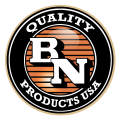Rebar is found in virtually every concrete and masonry structure. It is short for “reinforcement bar” and refers to the steel rods that are installed inside the concrete and brick to help them keep their shape. This device is essential for ensuring safe, durable structures that will be reliable for years. Without them, the natural expansion and contraction of the concrete will cause weak areas to develop, which will ultimately collapse in the long run. Rebar typically consists of carbon steel, as this material allows for a stronger bond and tensile strength. Although concrete is definitely a resilient substance that can bear a substantial amount of weight, what it offers in load-bearing capacity it lacks in tensile strength. This is the opposite effect of compression; concrete expansion leads to imbalance.
The purpose of rebar is to correct this imbalance. Have you ever noticed the way rebar is constructed? Builders strategically frame the steel rods in such a way that keeps concrete and mortar in check. How exactly is rebar manufactured though and how is it distributed? There are many companies that specialize in rebar manufacturing and for good reason, as this is one product that is always in high demand. Wherever there is need for reinforced steel (any commercial project you can imagine), rebar will be used. To demonstrate how reliable this material is, you may be surprised to know that it has been used by builders for over 150 years. Here is a quick guide to how rebar is manufactured, and how it ends up becoming a finished product that is used to construct a diverse range of structures.
How Rebar is Made
- Steel (carbon or alloy) is melted down to liquid form, which requires an extreme amount of heat to achieve. Once melted, the liquid steel is pulled through small round openings to give the rebar its shape.
- While unfinished steel is the cheapest form of rebar available, some jobs necessitate epoxy-coated or stainless steel. The reason being that rust can occur when the rebar has prolonged exposure to salt water, which can ultimately lead to a buildup of internal pressure that can cause the concrete form to crack. Since this is not a profitable or safe option in the long-term, most developers will opt to purchase higher-grade material.
- Once the steel has been properly shaped, the manufacturer will make the twists and grooves on the metal to ensure it will stay firmly in place inside the structure.
- Since these reinforced metal bars are highly hazardous when it comes to installation, their ends are often covered with plastic caps to prevent accidental harm to construction workers.
- Rebar is often distributed straight from the manufacturer to the job site, although contractors can arrange for pickup if they need to. Once on site, the product will need to be bent to the proper specs. This is accomplished with specialty hydraulic benders and cutters. Only certain types of rebar can be welded, which is why many construction companies utilize wire and coupling splices to join the ends together. BN Products, one of the primary suppliers of the most innovative rebar tools on the market, has a large variety of quality rebar benders, cutters, and combination rebar tools to help with such jobs.


